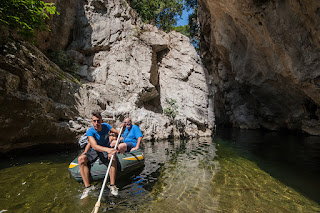Pggioreale cinquantatre anni dopo - Poggioreale fifty-three years later
La storia di questo paese è tristemente legata al terremoto che colpì la valle del Belice la notte tra il 14 ed il 15 gennaio 1968, con esiti devastanti. La vera identità degli abitanti del paese di Poggioreale si trova e sembra quasi vivere ancora tra i ruderi di quello che è stato rinominato il “paese fantasma”.
Passeggiando tra le rovine del paese, si riesce a comprendere la tragedia del terremoto che colpì il piccolo paese. il tempo sembra che si sia fermato. Ma è anche un esempio di pessima politica che invece di valorizzare un bene così raro e particolare, lo lascia in stato di abbandono e finge di non sapere che malgrado i divieti tutti riescono ad entrare.
L’ultima volta che siamo andati con i miei corsisti a Poggioreale antica, siamo stati accompagnati durante la visita da un addetto all’Associazione Poggioreale Antica, il sig. Musso Giacinto, che da oltre tredici anni si occupa di tenere in buono stato i ruderi dell’antico paese, il quale ci raccomandava di non entrare nei vari edifici, di non raccogliere e non portare via nulla, ma di visitare questo luogo con estremo rispetto per la tragedia che vissero i residenti all’epoca.
Nonostante fosse uno dei paesi più florenti dell’isola prima del disastro, dopo il terremoto i lavori di ricostruzione da parte del governo vennero spostati di qualche chilometro. La decisione presa fu quella di non restaurare i ruderi del paese, un lavoro che a quell’epoca fu ritenuto antieconomico e potenzialmente pericoloso. Il paese venne ricostruito di sana pianta diversi chilometri più a valle, utilizzando strutture moderne e avveneristiche per l’epoca. A sorgere fu un paese completamente nuovo, mentre dove una volta c’era l’antica Poggioreale restarono le rovine, ancora in piedi fino ad oggi.
Dal 2011, il piccolo paese sepolto dalle macerie e dalla fitta vegetazione ha cominciato a rinascere grazie all’impegno dell’Associazione Poggioreale Antica. Il progetto dell’Associazione è fare diventare Poggioreale antica un grande museo a cielo aperto, per destinarlo ad un tuirsmo alternativo visto l’evento sismico.
The history of this town is sadly linked to the earthquake that hit the Belice valley on the night between 14 and 15 January 1968, with devastating results. The true identity of the inhabitants of the town of Poggioreale is found and almost seems to still live among the ruins of what has been renamed the "ghost town".
Walking through the ruins of the town, you can understand the tragedy of the earthquake that struck the small town. time seems to have stopped. But it is also an example of a bad policy which, instead of enhancing such a rare and particular asset, leaves it in a state of neglect and pretends not to know that despite the prohibitions, everyone is able to enter.
The last time we went with my students to Poggioreale Antica, we were accompanied during the visit by an employee of the Poggioreale Antica Association, Mr. Musso Giacinto, who for over thirteen years has been taking care of keeping the ruins of the ancient town in good condition, who advised us not to enter the various buildings, not to collect or take anything away, but to visit this place with extreme respect for the tragedy experienced by the residents at the time.
Although it was one of the most flourishing towns on the island before the disaster, after the earthquake the reconstruction work by the government was moved a few kilometers. The decision was made not to restore the ruins of the town, a job that at that time was considered uneconomic and potentially dangerous. The town was rebuilt from scratch several kilometers downstream, using modern and futuristic structures for the time. A completely new town was born, while where once there was the ancient Poggioreale the ruins remained, still standing to this day.
Since 2011, the small town buried by rubble and dense vegetation has begun to be reborn thanks to the commitment of the Ancient Poggioreale Association. The Association's project is to make Poggioreale Antica a large open-air museum, to be used for alternative tourism given the seismic event.
Potete scaricare GRATUITAMENTE il nuovo numero della nostra rivista "Sicily in Photo Magazine n.6” al seguente link:




Commenti
Posta un commento